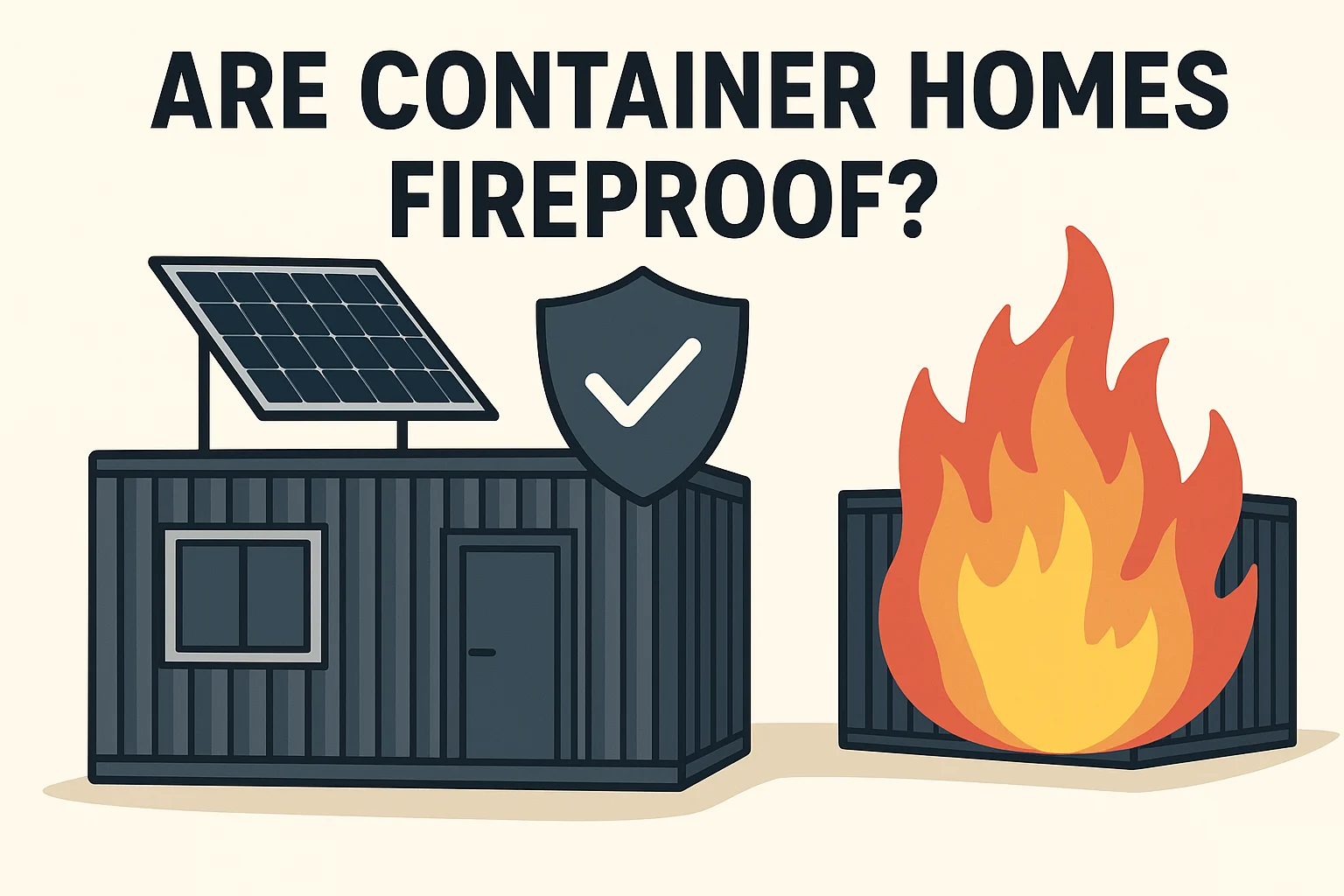Are Container Homes Fireproof? The Real Truth About Fire Safety


Shipping container homes are now a global phenomenon in green and modular dwelling. Their chic, industrial aesthetic and rapid construction capture the imagination of homeowners, architects, and eco-designers. But still and above all else in most minds is the question: are container homes fireproof?
The Steel Structure Advantage
Hugging the center of every container house is Corten steel, a super-durable, weathering-grade steel created to withstand ocean travel and harsh climates.
Steel itself is not combustible — it will not burn and will not feed fires. This naturally places container houses ahead of traditional wooden houses, whose framing and siding are typically flammable.
But “fireproof” and “fire-resistant” are different things. Steel doesn’t burn, but it does weaken at high temperatures — about 1100°F (600°C). Even in fierce fires, long exposure can make the metal buckle or warp, weakening its structural strength.
The Real Threat: Interior Finishes and Insulation
The greatest fire threats to container houses aren’t found in the container itself, but in what’s contained within.
Construction crews put in insulation, drywall, electrical wiring, and occasionally wood treatments to render a container habitable — all of them varying in their fire performance.
- Spray foam insulation: Typical in conversions, but will burn if exposed to direct flame.
- Mineral wool or rock wool: High fire rating, up to 1800°F (1000°C).
- Gypsum board: Additional protection, slowing the spread of fire.
For extra protection, fire-rated drywall, intumescent coating, and noncombustible panels can significantly reduce fire damage potential.
How Container Design Resists Fire Spread
Container homes have unique benefits in compartmentalization. Each module is an enclosed steel compartment, which slows down the transmission of flame from one section to another.
In well-planned design — with close doors and fire-resistant corners — the fire will be less likely to extend far beyond its starting point than it would in a building spreading throughout the entire structure.
For off-grid or solar-powered house-in-a-container buildings (like those made by HighJoule), integrated solar storage systems also need to be fire-protected. Lithium batteries, though efficient, ought always to be housed in ventilated enclosures with temperature regulation.
Fireproofing Techniques for Container Homes
If you are planning to build or buy a container home, you can enhance fire resistance with the following steps:
✅ Fire-rated insulation: Use mineral wool or fiberglass instead of spray foam.
✅ Steel frame coatings: Use intumescent paint to establish a thermal barrier.
✅ Fire-resistant cladding: Cement board or fiber-cement siding is better than vinyl or wood.
✅ Zoned layout: Separate living spaces, electrical systems, and storage for security.
✅ Proper ventilation: Reduces heat accumulation in enclosed metal spaces.
Some high-end container models even incorporate fire-suppressing systems — sprinkler or dry chemical extinguisher — built into the ceiling structure itself.
Real-World Case Studies
Several actual trials and case reports suggest that container houses perform under fire conditions quite excellently. Certain Australian and Californian homeowners with elevated bushfire hazards use steel containers for temporary dwellings since they are resistant to structure and low combustibility.
In one case described, a wildfire consumed nearby wooden homes while a container house on the same property remained intact — its steel exterior burnt but still standing. The fire had caused little damage inside, only to furniture and finishings, not the structure.
Limitations and Misconceptions
Despite all of their advantages, container houses are not entirely fireproof. Excessive heat can distort steel, and unsealed interiors can still catch fire. The idea of a “fireproof house” is hype, not reality — all homes require active fire safety planning.
You should always install:
- Smoke detectors and fire alarms
- Accessible extinguishers
- Clear emergency exits
- Properly certified electrical systems
Conclusion
Container homes, as a structural matter, are more fireproof than traditional wood-framed housing. Their steel body, compartmentalized design, and non-flammable components form a tough option for residents of wildfire regions.
However, interior finishes, insulation, and electrical systems are the determining factor in the final fire-safe rating. Using smart materials and sophisticated protection systems, container homes can meet unprecedented levels of fire resistance — short of absolute exemption.
So, while not fireproof by any means, container homes are some of the safest, most durable forms of housing for fire resistance — particularly those that are properly engineered and constructed with certified materials.




